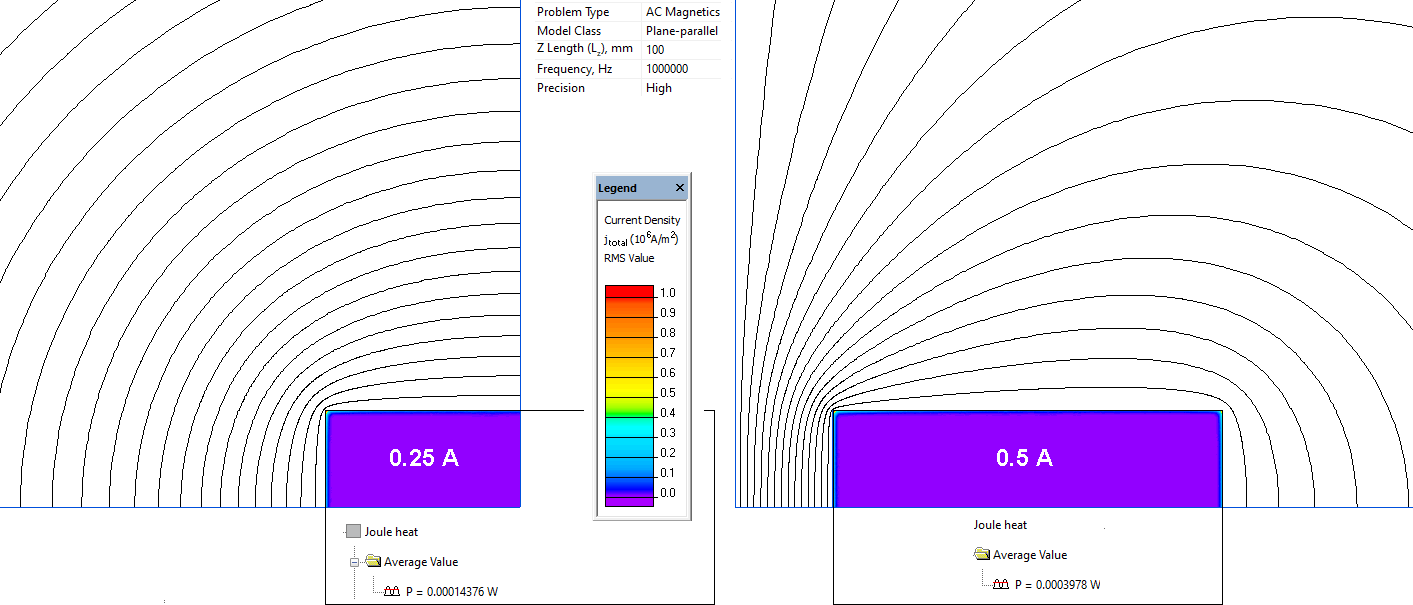Busbars mutual resistance
QuickField simulation example
If you take a straight conductor and measure its inductance and then make a loop of that conductor, you may notice that the inductance value has changed. That is because of the mutual inductance between the loop parts.
The same is true for the resistance value. If you place loop conductors close to each other the overall resistance will not be equal to the sum of parts resistance. The difference is caused by the proximity effect*. Following mutual inductance analogy you can call this a mutual resistance. The effect is prominent at high frequency. You can encounter it in transmission lines, transformers, cables, PCB, bus-bars.
In this example we simulate a loop made of two copper bars and calculate its resistance.
Problem Type
Plane-parallel problem of AC magnetics.
Geometry
The length of the bars is 100 mm.
Given
Copper conductivity is 56 MS/m.
AC current frequency f = 1 MHz.
Task
Calculate loop mutual resistance.
Solution
To calculate the resistance we use the Joule heat power value
First we simulate just one copper bar to find its resistance R. Then we simulate a loop to find the loop's resistance Rloop.
Mutual resistance** = (R + R - Rloop) / 2
We utilize model symmetry and simulate ¼ of the full geometry model. We should take this into account while postprocessing.
Results
We put the current of 1 A in the bar.
A power loss in a quarter of the bar is P¼ = 0.00014376 W.
Bar loss is 4 * P¼ = 0.000575 W.
Bar resistance R = 2*0.000575 / 1² = 0.00115 Ohm = 1.15 mOhm
A power loss in the half-bar of the loop is 0.0003978 W.
Loss in a bar is 2*0.0003978 = 0.0007956 W
There are two bars in the loop. Total loop loss is 0.0007956 + 0.0007956 = 0.0015912 W.
Loop resistance Rloop = 2*0.0015912 / 1²= 0.00318 Ohm = 3.18 mOhm.
Mutual resistance = (1.15+1.15-3.18)/2 = -0.44 mOhm.

References
* Wikipedia Proximity effect
** J.E. Bracken, Mutual Resistance in Spicelink. Ansoft Corporation, Pittsburgh, PA, 2000.
- Download simulation files (files may be viewed using any QuickField Edition).